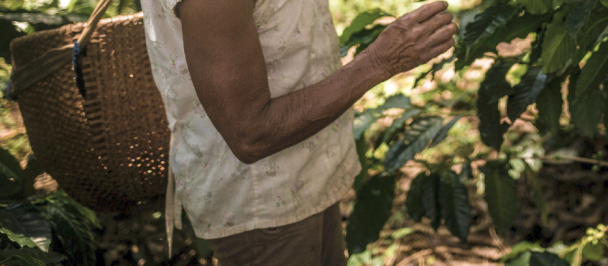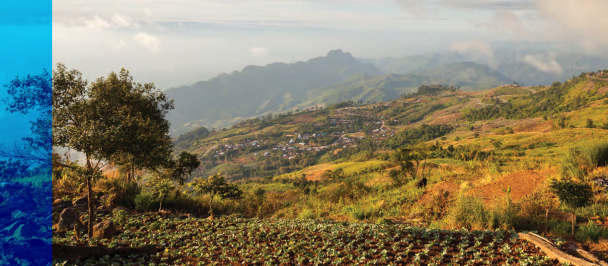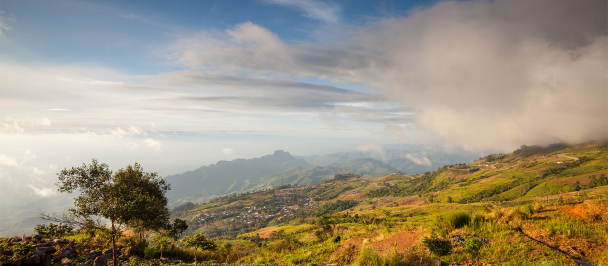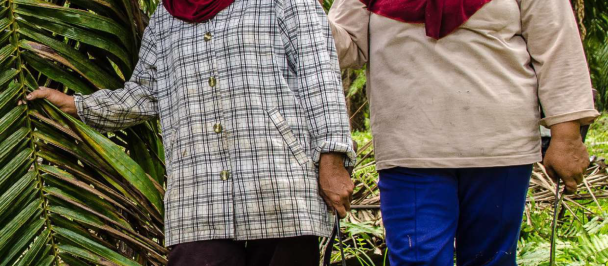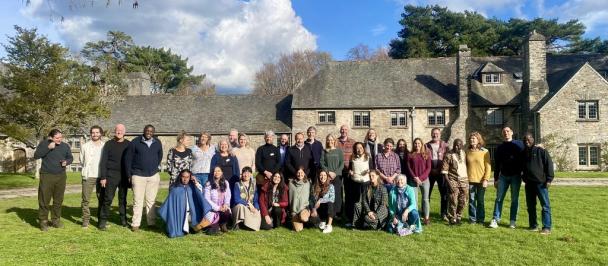In an effort to better define a nationally accepted definition of 'high conservation value areas' and to streamline nationally accepted regulations related to HCVs, the Indonesia Palm Oil Platform - FoKSBI - has been facilitating a series of technical discussions between key government departments.
The concept of High Conservation Value areas or HCV is a highly regarded criterion for environmental conservation within the international commodity sector. When it comes to palm oil HCV is recognised internationally via RSPO’s principles and criteria and in Indonesia it was previously considered in the Ministry of Agriculture’s ISPO standard and criteria. However the internationally developed HCV approach, which is used to identify and manage biological, ecological, social or cultural features of outstanding significance or critical importance, is not formally recognized by Indonesian law.
Throughout 2015, FoKSBI’s working group on environmental monitoring discussed and debated the issue of implementing HCV regulation and has identified relevant Indonesian laws and regulations related to HCV principles. FoKSBI’s goal is to assist the strengthening of the identified existing legal framework to accommodate international expectations for environmental conservation.
Five Ministries within the government of Indonesia hold responsibilities related to the regulation and control of oil palm plantation development and conservation. These regulations include location permits, plantation permits, environmental impact assessments, and land acquisition.
The regulations discussed during April's meeting were: Essential Ecosystem Area (KEE) in the Government Regulation No. 28/2011 regarding Natural Reserve Area and Nature Conservation Areas Management; Internal Letter of the Minister of Agrarian and Spatial Planning/National Land Agency (ATR/BPN) No. 10/SE/VII/2015 regarding High Conservation Value Forest/Area (HCV) in the issuance of permits (HGU); and forestry ministerial decrees regarding the release of Production Forest Conversion.
Essential Ecosystem Areas (KEE) according to government regulation no. 28/2011, are karst and wetlands (lakes, rivers, marshes, brackish, and intertidal zones of no more than six meters), mangroves and peat land ecosystems which are outside of wildlife sanctuary and national park conservation areas.
The meeting participants agreed that the existing regulations, related to high conservation value areas, required revision. It was decided that the existing regulations, many of which currently overlap and cause conflict, must be improved, better defined and coordinated between ministries and provincial governments. A policy paper analysising the existing regulations related to conservation areas, which will reference and consider the HCV Consortium for Indonesia Guidelines, is currently being developed by the working group.
Aside from the analysis of existing laws and regulations, the meeting participants also debated the potential of additional Essential Ecosystem Areas (KEE), including some areas within existing oil palm concession zones. According to the Ministry of Environment and Forestry, based on initial analyses, an additional 90 million hectares of land has been considered 'potentially as KEE' but it is currently not protected or is considered outside conservation areas.
However, the Ministry of Agriculture representatives present at the meeting emphasised the need to refine a conservation value system that also enables continued economic development and recognition of the impact to livelihoods. The participants raised concerns, explaining that mapping of any new KEE must be conducted carefully and consider the likelihood of overlap with areas of land reserved for agricultural productivity or land that is already occupied by smallholders.
Key Areas of Agreement and Committed Efforts Moving Forward
- It was suggested that conservation legal framework should go beyond a Ministerial Decree and be developed as a Government Regulation so that it has a broader scope. There should be complimentary, relevant regulations between the Ministry of Agriculture, Ministry of Environment and Forestry, Ministry of Agricultural Spatial Planning and the National Land Planning Agency related to conservation value. If the ultimate intention is to create a Presidential Regulation or a Ministerial Regulation for conservation value, it was agreed that a realistic timeline be agreed on and that all relevant Ministries be involved during the drafting and approval processes.
- The relationship between KEE, a national government regulation, and HCV, an internationally developed definition, is unclear as there has been little synergy between Government Ministries and international organisatons on this issue to date. In general it was agreed that both approaches are similar in objective but their criteria differs. The meeting participants agreed that the relationship between the two approaches should be made clear to avoid confusion or regulatory problems. It was suggested that KEE could act as a broader umbrella of conservation value legislation, which could incorporate guidelines related to HCV and other international expectations.
- A follow-up meeting will be scheduled in the coming months to establish an inter-ministerial consensus on the definition of conservation values and the government’s own KEE regulations. International definitions will be considered and the HCV Consortium for Indonesia Guidelines will be presented for reference and discussion.
- Once a common understanding of conservation values are reached between the Ministries, the Directorate of KEE Management at the Ministry of Environment and Forestry will present a draft policy paper to the inter-ministerial technical working group during a follow-up meeting facilitated by FoKSBI.
- It was agreed by the meeting participants that the government of Indonesia is the only authorized body to determine KEE areas. NGOs cannot legally determine conservation areas however their input via the government is strongly encouraged and valued.
- Developing a conservation value nationally approved tool kit was considered a priority. The guidelines and tool kit will be developed once the definitions and approach of conservation values are agreed on by all relevant ministries.
- The Ministry of Environment and Forestry will lead the effort to strengthen and define conservation value regulation.

 Locations
Locations